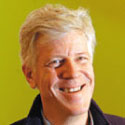Aquarius Sees the Gulf of Mexico

President
Earth and Space Research
Earth and Space Research
Dr. Lagerloef completed a Ph.D. in Physical Oceanography at the University of Washington in 1984. In 1995, he co-founded Earth and Space Research, a non-profit scientific research institute in Seattle where he has developed several research projects devoted to studies of the upper ocean dynamics and climate variability using satellites.
Webinar Clip
In this clip, Dr. Lagerloef, Principal Investigator for the NASA Aquarius satellite mission, describes an interesting salinity feature in the Gulf of Mexico in September 2011. Using the earliest data collected from the satellite, Dr. Lagerloef is able to point out that these features in the Gulf are not just anomalies, as scientists had previously thought. This was confirmed using a combination of weather (Hurricane Lee) and river discharge data.Full webinar: What Is Aquarius Data Telling Us? (Part 2)
Click here for a transcript of this clip (PDF, 37.7 KB). |
Resources
Applicable Science Standards
 Analyzing and Interpreting Data. Scientific investigations produce data that must be analyzed in order to derive meaning. Because data patterns and trends are not always obvious, scientists use a range of tools - including tabulation, graphical interpretation, visualization, and statistical analysis - to identify the significant features and patterns in the data. Scientists identify sources of error in the investigations and calculate the degree of certainty in the results. Modern technology makes the collection of large data sets much easier, providing secondary sources for analysis.
Analyzing and Interpreting Data. Scientific investigations produce data that must be analyzed in order to derive meaning. Because data patterns and trends are not always obvious, scientists use a range of tools - including tabulation, graphical interpretation, visualization, and statistical analysis - to identify the significant features and patterns in the data. Scientists identify sources of error in the investigations and calculate the degree of certainty in the results. Modern technology makes the collection of large data sets much easier, providing secondary sources for analysis. Using Mathematics and Computational Thinking. In both science and engineering, mathematics and computation are fundamental tools for representing physical variables and their relationships. They are used for a range of tasks such as constructing simulations; solving equations exactly or approximately; and recognizing, expressing, and applying quantitative relationships.
Using Mathematics and Computational Thinking. In both science and engineering, mathematics and computation are fundamental tools for representing physical variables and their relationships. They are used for a range of tasks such as constructing simulations; solving equations exactly or approximately; and recognizing, expressing, and applying quantitative relationships. Obtaining, Evaluating, and Communicating Information. Scientists and engineers must be able to communicate clearly and persuasively the ideas and methods they generate. Critiquing and communicating ideas individually and in groups is a critical professional activity.
Obtaining, Evaluating, and Communicating Information. Scientists and engineers must be able to communicate clearly and persuasively the ideas and methods they generate. Critiquing and communicating ideas individually and in groups is a critical professional activity.